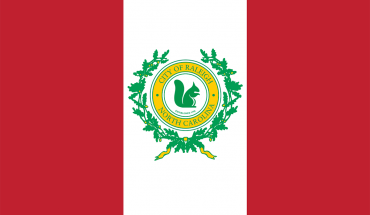by Jake Satisky | photography by Smith Hardy

When I was young, I would get nervous reciting the Hanukkah story. In front of me were my friends and neighbors, yarmulkes awkwardly perched on their heads, bellies full of latkes and Hebrew National pigs-in-a-blanket. They’d give me their rapt attention, like I was their Sunday School teacher and they were my doting students. They hardly knew anything about Judaism.
We’d light the menorah and my mom would dim the lights. The candles would cover the living room in a soft, golden light. I’d glance at my younger brother, who was also slightly uncomfortable. It wasn’t that long ago that we were learning this story ourselves, at our synagogue, in a classroom of our peers. Now, we were the teachers. How would I convey a story that has little religious significance—yet exalts the resilience of the Jewish people? “A long time ago, the Assyrians conquered Israel and banned Jews from practicing their religion,” I’d begin. Once I started, the rest was a breeze.
For the last decade-and-a-half, my family has thrown a neighborhood Hanukkah party every December. We are the only Jewish family where we live, so the party is more than just a chance for my mom to host a get-together. My family—my mom Graham, my dad, Keith, my brother Luke and myself—aims to provide our non-Jewish friends with firsthand insight into the rituals behind Hanukkah, the “festival of lights.”

Hanukkah is basically Jewish Christmas, but for eight nights instead of one. Each night, we light an additional candle on the menorah, a nine-pronged candelabra, and recite two prayers. There are a host of traditions that accompany the lighting of the menorah, including eating delicious potato pancakes known as latkes, spinning the dreidel (a four-sided top with Hebrew letters on the sides) and giving out small presents. Though Hanukkah does not have the same religious significance for Jewish people as Christmas does for Christians, it is a rich cultural holiday. It symbolizes the Jewish struggle against powerful enemies and celebrates God’s miracles.
Here’s the short version of the Hanukkah story: The Assyrians conquered Israel and imposed the ancient Greek religion onto the Hebrews. Frustrated at not being able to practice their religion, a small army known as the Maccabees rebelled against their conquerors—and won. But when they arrived victorious in Jerusalem, the Maccabees found their holy Temple in disarray, with only enough oil to keep the eternal light aflame for one day. Miraculously, the menorah in the Temple stayed lit for eight days, enough time for the Jews to gather more oil. That story explains the four Hebrew letters on every dreidel: nun, gimel, hay and shin, representing Nes Gadol Haya Sham, or “A Great Miracle Happened There.” The great miracle at the Satisky household began when I was in kindergarten and one of the only Jewish kids in my class. During Hanukkah, my mom would invite some of my friends over for a playdate after school, so we could play the dreidel game with chocolate coins called gelt (even though I hated chocolate). A few years later, she decided to formalize the party by inviting our neighbors, and it has become an annual tradition. (My mom tried to stop hosting it one year, but was met with such furious resistance from everyone who enjoyed it so much that she continued.)

During the party, the kids—some of us now, technically, adults—head downstairs to gobble up latkes and play with the dreidels. They stare at the unusual symbols on the tops as Luke and I keep explaining how landing on gimel means you get all the gelt, while landing on shin means you lose a coin. Upstairs, the adults… well, I don’t know what the adults are up to, but I imagine they gossip about us kids downstairs, and also gobble up latkes. After a couple hours, everyone puts on a yarmulke (a Jewish skullcap) and then watches my family light the menorah, say the prayers in Hebrew and English and recount the tale of the Maccabees.
We love bringing our non-Jewish friends over and teaching them about the story and customs of Hanukkah. It is especially important to my mom, who grew up in a devout Catholic family, but converted to Judaism before meeting my dad. For my entire life, we have bridged the religious gap with my Catholic side of the family by reciting both Hebrew prayers and Grace at family dinners, as well as celebrating Hanukkah and Christmas together.
Our Hanukkah parties are also extremely important to me. My synagogue offered me a strong Jewish community growing up, but I was always one of only a handful of Jews in my neighborhood or my schools. As such, I received my fair share of questions, comments and jokes about Judaism (some of them occasionally off-putting). My peers did not necessarily mean to offend me—they just knew very little about Judaism. Therefore, I strive to continue my parents’ mission of sharing our faith with those around us.

When we started inviting our non-Jewish friends to Passover Seders at our house, I begged my parents to let me lead them, carefully explaining each ritual as I go. I got motivated to resurrect my high school’s Jewish Culture Club my senior year. I even wrote my college essay to Duke about sharing Judaism, and I now write this article outside my dorm in Durham, at a school where I celebrate Jewish holidays with Jewish students from all over the world. As they emphasize in the musical Fiddler on the Roof, Jews love tradition. So, as is tradition, we put an electric menorah in our window each year through the duration of Hanukkah. The rabbis teach us that placing a menorah in your window shows that you are proud to celebrate Hanukkah—and more importantly, that Jews do not live in fear of practicing their religion. I feel fortunate to live in a time and place where I don’t have to be afraid to express my cultural identity. Everyone should feel safe putting a “menorah” in their window.



